What is flexible stone?
To understand how to finish, you need to figure out what the material is and how it is produced.
From the name it is clear that the stone is soft. It can bend, it is suitable for cladding surfaces of irregular shapes, it is relatively easy to work with (in comparison with other natural materials). But how did the manufacturers manage to achieve this effect?
Flexible stone color photo
To obtain the material in the form in which it is delivered to the end user, a thin cut of sandstone (sedimentary rock, no more than 2 mm thick) is glued to the glass fiber layer. There is another, simpler production technology: on the same solid base, epoxy or acrylic glue is applied and the smallest stone chips are sprayed.
In the first case, the texture depends on the appearance of the cut, and in the second, it is set automatically on the machine that does the spraying. The second method of application opens up more design possibilities and allows you to get an imitation of any breed: from ordinary marble to quartz or the most beautiful agate.
Important! Both options have a maximum thickness of 5-6 mm.
Views
Flexible stone for walls is produced in 3 main formats.
Wallpaper
The largest option. The canvases are 1-1.2 m wide and 2-2.8 m long. It is used as a flexible stone for interior decoration when working with large surfaces. The coating of the wallpaper is the thinnest, the layer barely reaches 3 mm.
Tile
Stone pieces of compact size (20 * 30, 30 * 60, 40 * 80 cm) are suitable for decorating the same small areas. For example, kitchen apron, shower cabin, etc. Decorative dusting of 2-3 mm means that it can only be used inside the apartment.
Pictured is a soft stone tile
Panels
Sheets, about 2.5 meters in size, replace tiles and wallpaper at the same time. The main difference between the plates from those and others is the thickness of the coating, which reaches 6 mm. Suitable for flexible stone finishing of the facade, outdoor use.
Important! The average weight per square meter is 3.5 kilograms. This fact opens up new possibilities in wall decoration with flexible stone - for example, it can be used on weak structures such as drywall.
The photo shows an example of a sandstone tile
Pros and cons
The advantages of flexible stone in the interior:
- Durability... Being a natural stone material, it has an almost unlimited service life: responsible manufacturers give a 30-35 year warranty for their goods.
- Safety... The adhesives used in production are absolutely harmless: the material does not release phenols and other substances into the air.
- Ease of operation... No special tool is needed: you can cut it with ordinary scissors. In this case, cover not only straight, but also rounded surfaces: for example, columns.
- Water resistance... Resistant to moisture, suitable for use in the bathroom.
- Fire resistance... The stone does not burn, it can be used to frame the fireplace or stove in the living room.
- Frost resistance... Flexible stone finishing is possible inside and outside your own home. It can withstand temperatures from -45C to + 60C.
- Ease of care... Does not require special tools or actions to maintain appearance.
- Lightness... Sometimes the weight of the finishing material plays an important role in interior design: here stone wallpaper has no equal.
Disadvantages:
- Small thickness... This is both a plus and a minus: due to the fineness of the material, the flexible stone is installed only on ideally prepared surfaces.
- High price... The average price is 1200-1500 rubles per square, which is much more expensive than tiles.
- Limited choice of designs... If we are talking about the natural variety, when a layer of sandstone is cut, then the color and pattern are limited by the appearance of the original stone. In most cases, these are light beige sheets with red veins.
Applications in the interior
It is most often used in wall decoration on objects. Moreover, unlike tiles or porcelain stoneware, stone is appropriate not only in bathrooms, kitchens, hallways. Its original appearance can perfectly fit into the living room and even the bedroom.
Although it works best for wet rooms: the breathable surface does not allow condensation to accumulate, protects against the formation of mold and mildew, and helps to maintain a favorable microclimate.
Flexible stone in the interior photo office
The use of flexible stone in the interior is not limited exclusively to vertical surfaces. It is also used for:
- Floor coverings... Flexible stone flooring can be done both in bedrooms or living rooms, and in more actively used rooms: corridors, bathrooms, kitchens. It can withstand high loads and serve for many years.
- Fireplace area decoration... Unlike artificial stone, natural stone can easily withstand high temperatures up to 600-650C. Therefore, it will not melt or deteriorate from the heat of a stove or fireplace.
- Refining columns, rounded protrusions, arches... Each apartment and house has its own architectural features: if a reinforcing column has formed in one of the rooms, it is easiest to give it a decorative look with the help of a flexible stone.
- Decorating stairs... Stone steps are a symbol of luxury. But they do not have to be made entirely of an expensive breed. You can save a lot by simply covering a concrete staircase with decorative plates.
- Lightbox making... Yes, this unique material is used not only in decoration. Due to the fact that the material transmits light, it is possible to create night lamps or original lamps from it.
- Production of countertops, furniture fronts... The ability to take any shape and high performance properties open up new possibilities for using flexible stone in the kitchen. Not only for decorating an apron, but also as a countertop (you can cut food, put it hot), processing a bar counter, ennobling the outer side of doors. Due to the size of the panels or wallpaper, the work can be done practically without seams.
How does it look in different rooms?
In the bathrooms, if the budget allows, flexible stone is used to make the complete decoration of the walls and floor. If you don't want a stone room, combine flexible stone with paint, mosaic, or wallpaper (in dry areas).
In the kitchen, stone is most often made apron: it is not afraid of high temperature, it is easily washed from fat, looks spectacular. To the zone above work surface did not look too clumsy, highlight the dining area with a flexible stone.
Whole figured compositions are made in living rooms: you can depict mountains or any abstract figure. Mainly used as a TV backdrop or surface decoration for sofa.
Pictured are stone walls in the living room
The stone on the walls looks no less impressive in the study: it gives solidity and seriousness to the owner of the room, emphasizes good taste.
You can cover niches or partitions. For example, to beat a niche for video equipment mounted to hide wires.
Installation recommendations
- Since the material in any form is thin enough, the surface must be carefully prepared. Remove remnants of old coatings, level, prime.
- To make the seams invisible, glue the material with a butt joint, or with an overlap, and then warm it up with a construction hairdryer and smooth it.
- Use special acrylic or tile glue - both options do an excellent job and will be able to keep the stone in place for a long time.
- When working with several elements, first place them in the desired order on the floor, then transfer to the desired surface - this way you will get the desired pattern.
Looking for an easy-to-use, yet high-quality and durable material? Here it is! Having discovered this material for yourself, you understand: it is not for nothing that designers around the world have fallen in love with soft stone.

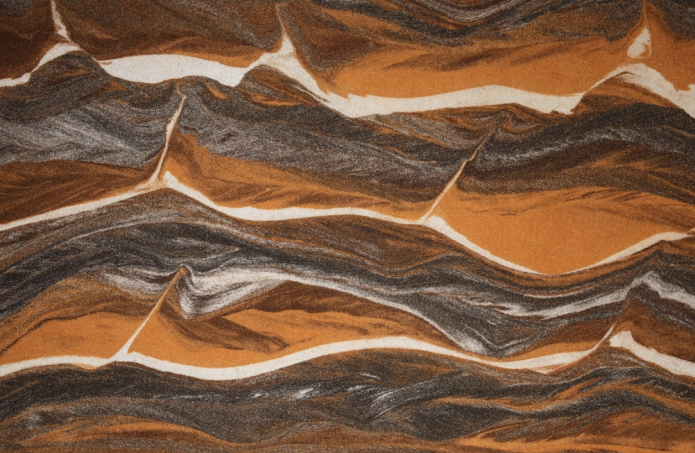
 10 practical tips for arranging a small kitchen in the country
10 practical tips for arranging a small kitchen in the country
 12 simple ideas for a small garden that will make it visually spacious
12 simple ideas for a small garden that will make it visually spacious

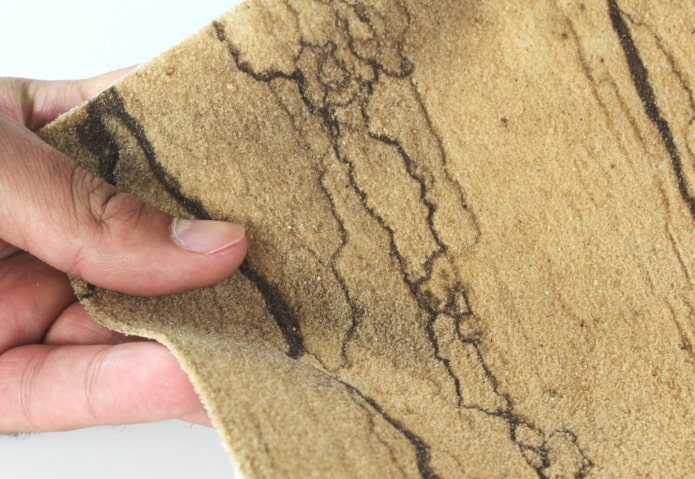
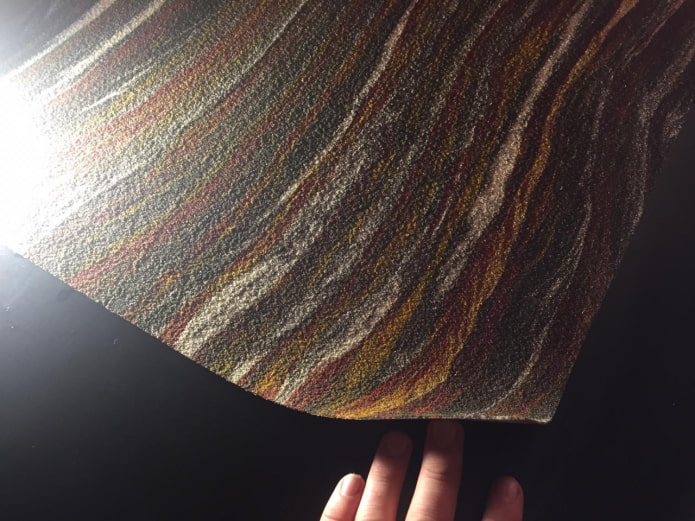
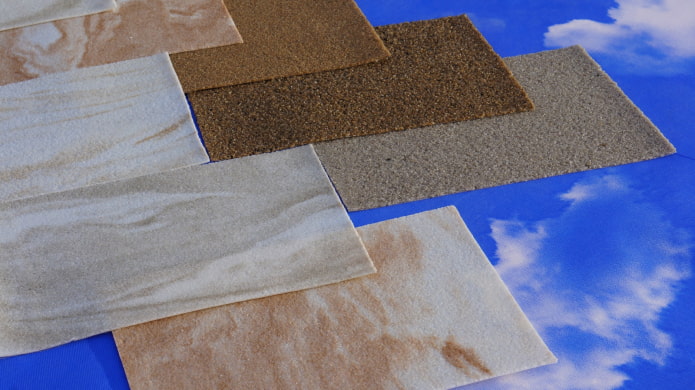

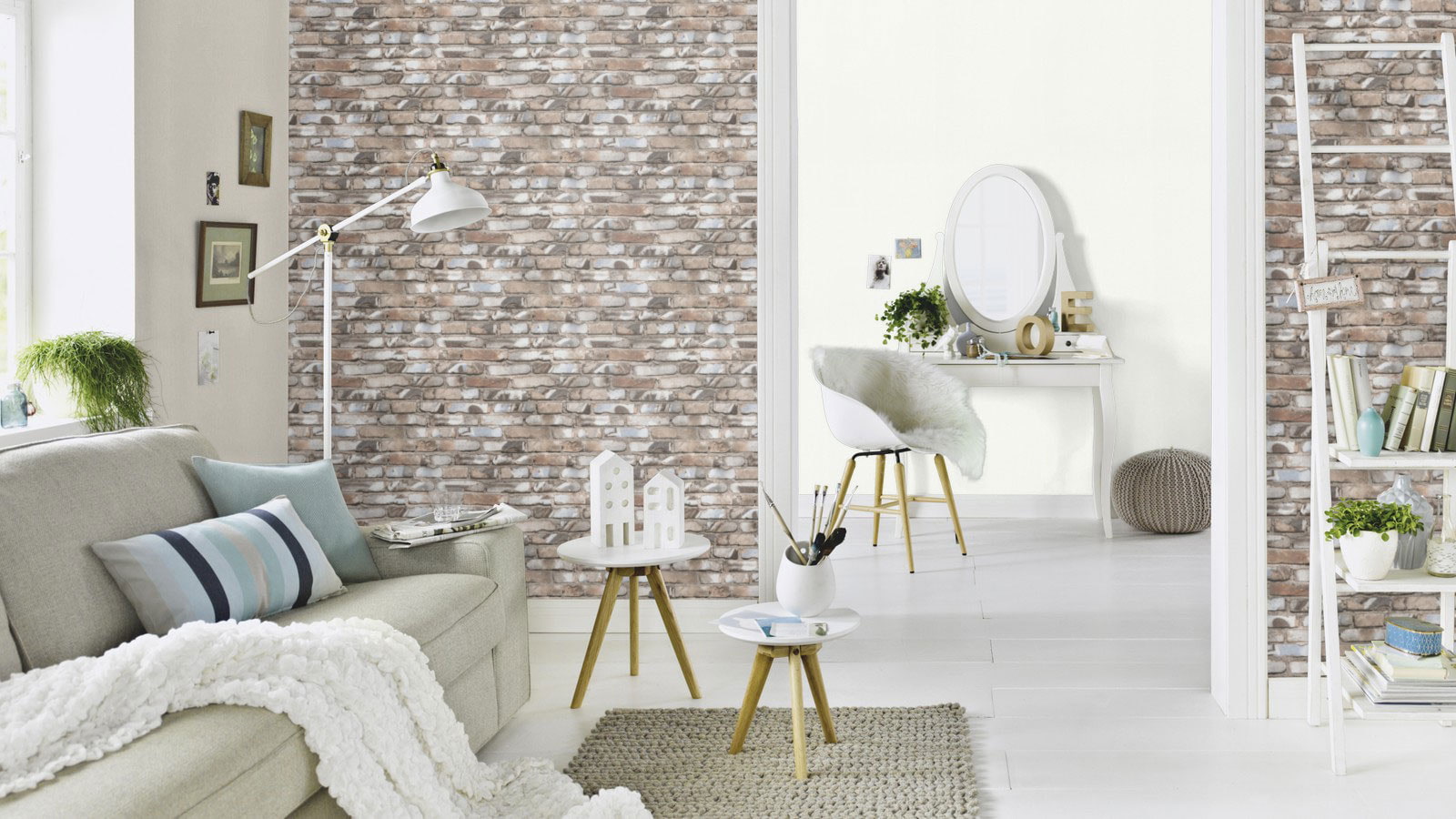
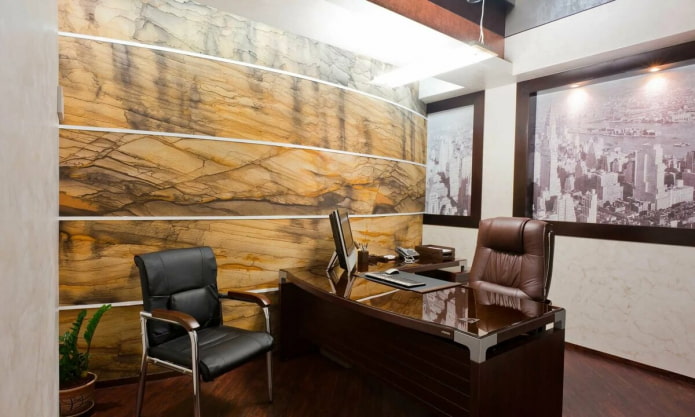
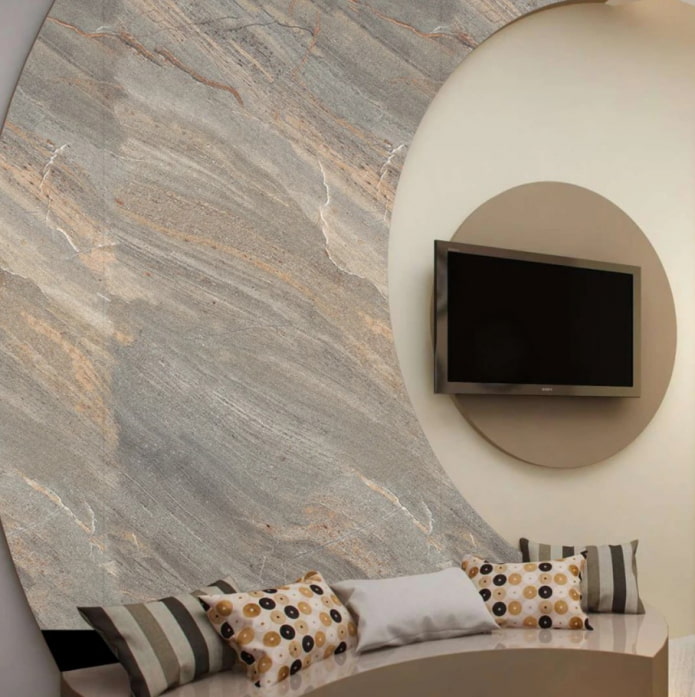
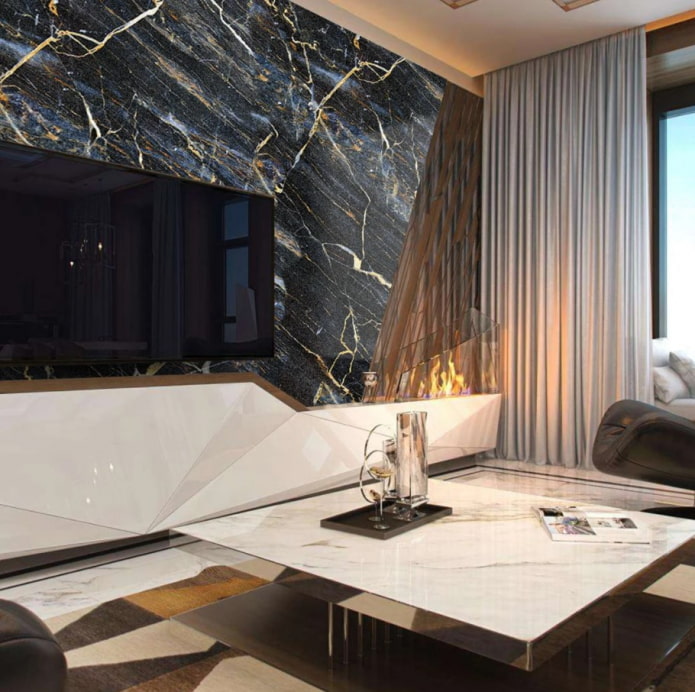

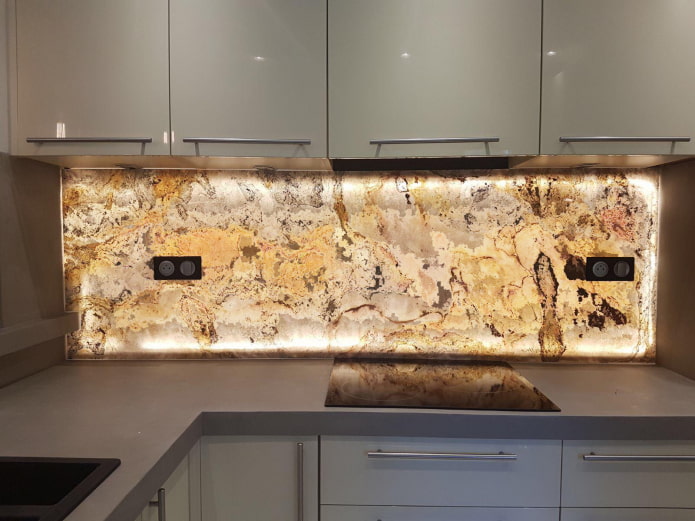

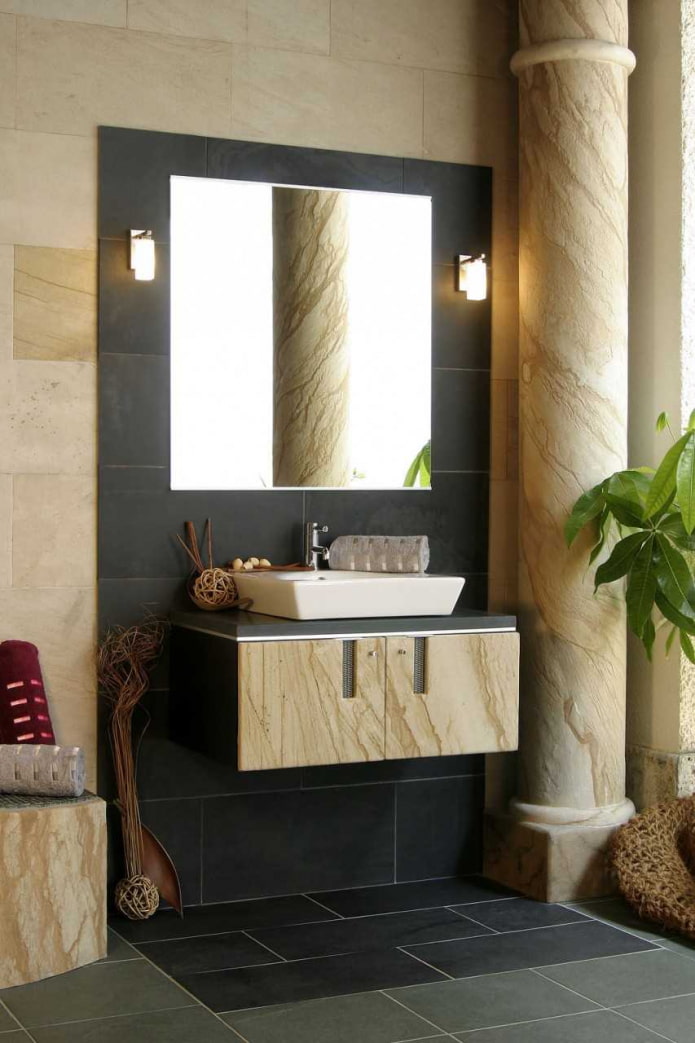
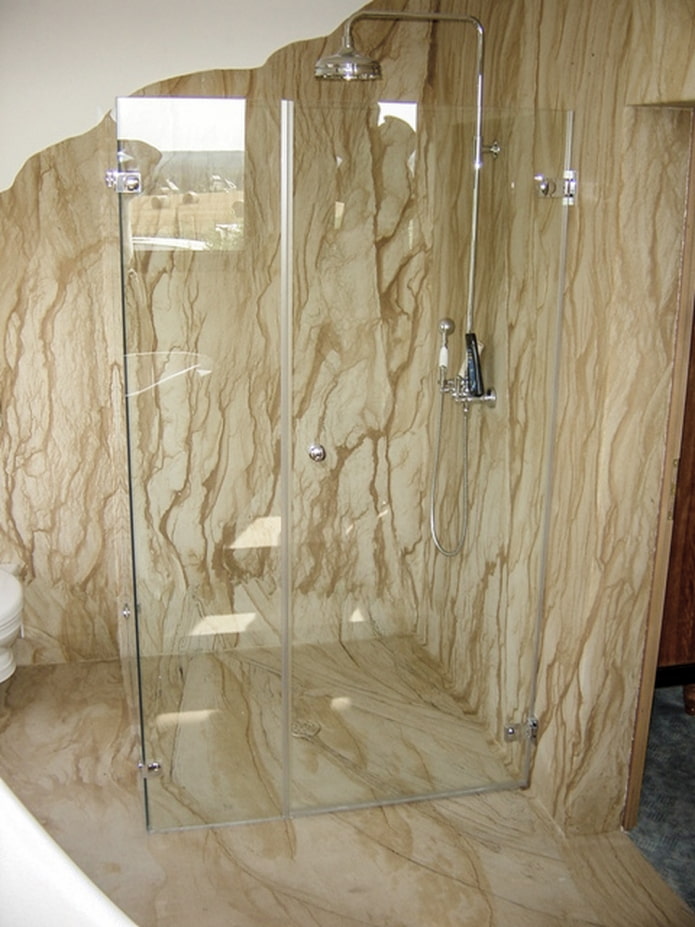
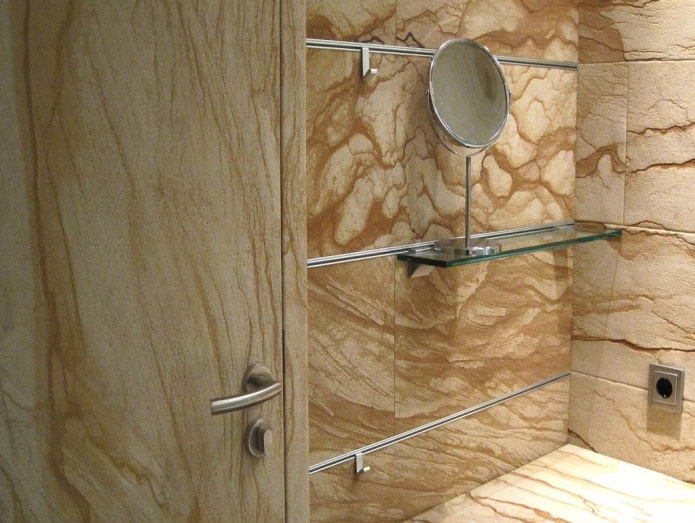
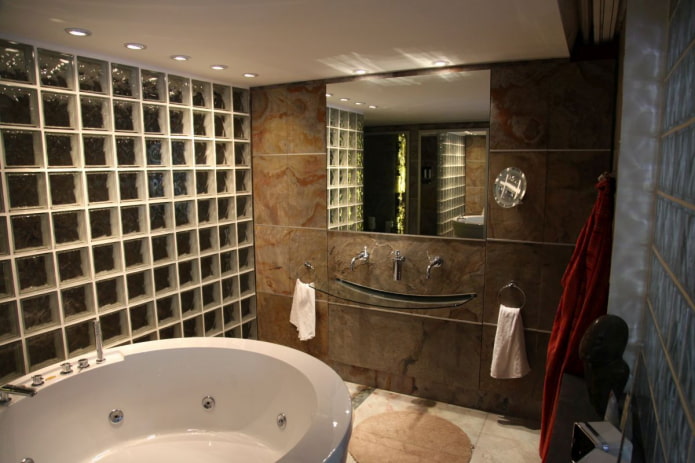

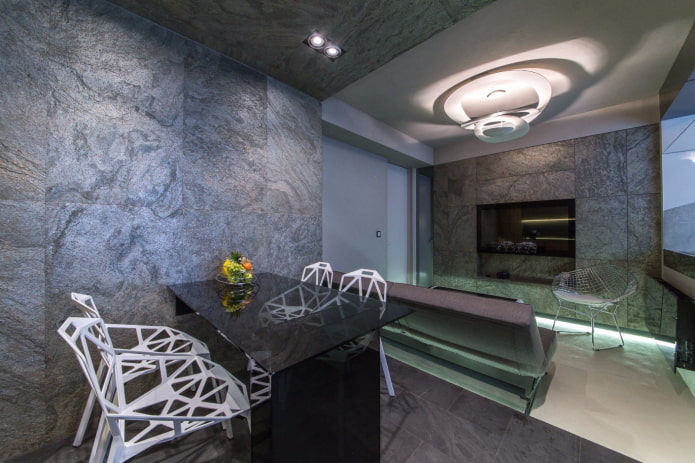

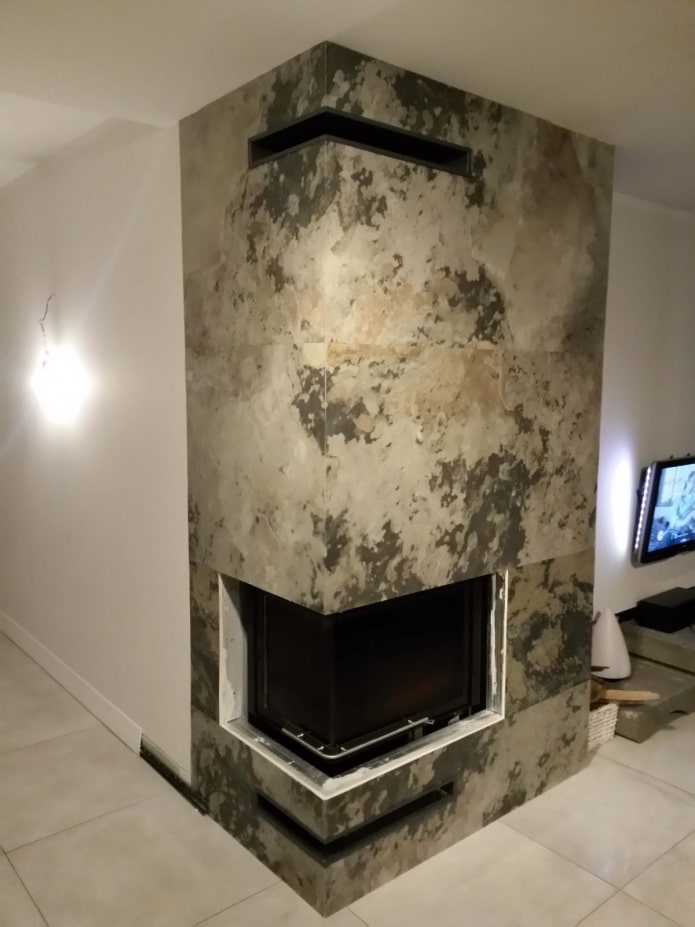
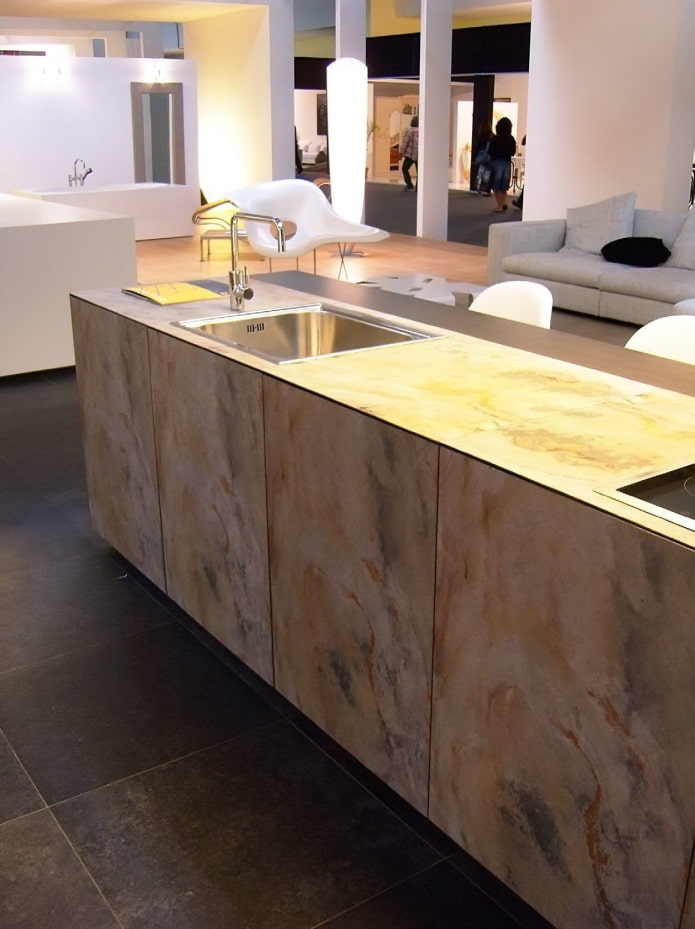

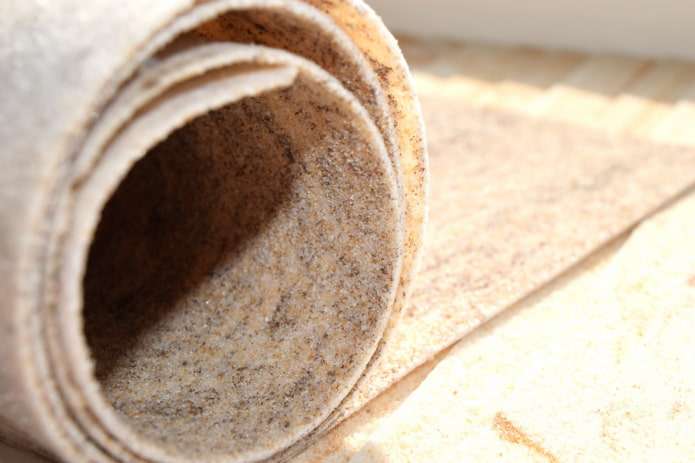

 What is better not to do it yourself during the repair?
What is better not to do it yourself during the repair? Bloated linoleum: how to fix it without disassembly
Bloated linoleum: how to fix it without disassembly The worst decisions in apartment renovation
The worst decisions in apartment renovation  Installation of ceiling tiles: choice of materials, preparation, order of work
Installation of ceiling tiles: choice of materials, preparation, order of work How to glue a ceiling plinth to a stretch ceiling?
How to glue a ceiling plinth to a stretch ceiling? Ceiling plinth for stretch ceiling: types, recommendations for selection
Ceiling plinth for stretch ceiling: types, recommendations for selection